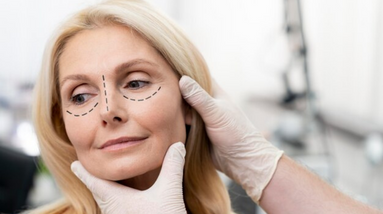
Rhytidectomy, commonly referred to as a facelift, is a cosmetic surgical procedure used to reduce the signs of aging in the face and neck. The procedure involves removing excess skin, tightening the underlying tissues, and re-draping the skin on the face and neck to create a smoother, more youthful appearance.
The facelift procedure is typically performed on individuals who have visible signs of aging, such as sagging skin, deep lines and wrinkles, or a loss of facial volume. The surgery can address a variety of concerns, including jowls, deep nasolabial folds, loose skin around the neck and jawline, and other signs of aging.
During the procedure, the surgeon will make incisions in inconspicuous locations, such as behind the ears or along the hairline, and then remove the excess skin and tighten the underlying muscles and tissues. The skin is then re-draped over the face and neck, and any excess skin is trimmed away.
While a facelift can provide significant results, it is not a one-size-fits-all solution. The procedure can be customized to meet the unique needs of each individual patient, and may be combined with other procedures such as eyelid surgery or brow lift for a more comprehensive rejuvenation.
Like all surgical procedures, a facelift does come with some risks and potential complications. These can include bleeding, infection, scarring, nerve damage, and asymmetry. However, when performed by a qualified and experienced surgeon, the risks are generally low.
Overall, a facelift can be an effective way to turn back the clock and restore a more youthful, refreshed appearance to the face and neck. Patients should carefully consider their goals and expectations for the procedure, and consult with a qualified surgeon to determine if a facelift is the right option for them.